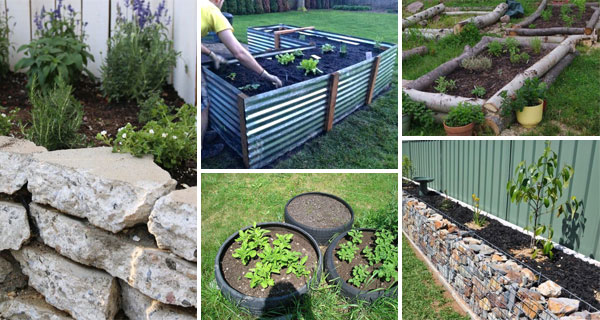22 Creative Outdoor Fish Pond and Aquarium Designs
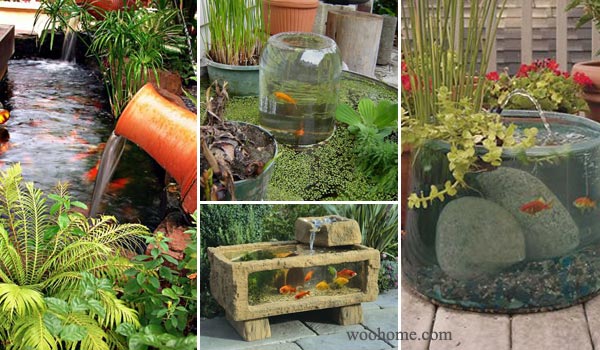
Usually, when we talk about aquariums, we always think they should be indoors. But if you take a look at the booming field of outdoor aquariums, you would change your mind. Small ponds, fountains, waterfalls, planters, and aquariums are all wonderful ideas that can make your home’s outdoor space more comfortable and beautiful.
Besides being beautiful outdoor decorations, outdoor aquariums/fish tanks have their own advantages: they can bring life and tranquility to any garden, deck, patio, or backyard. Outdoor aquariums also provide an opportunity to observe fish and other aquatic life in a natural environment. Additionally, they can help to balance the ecosystem of your garden by promoting beneficial bacteria growth and reducing mosquito populations. Here, we have gathered 22 outdoor aquarium ideas to help you create your own garden aquarium or fish pond, so come and have fun!
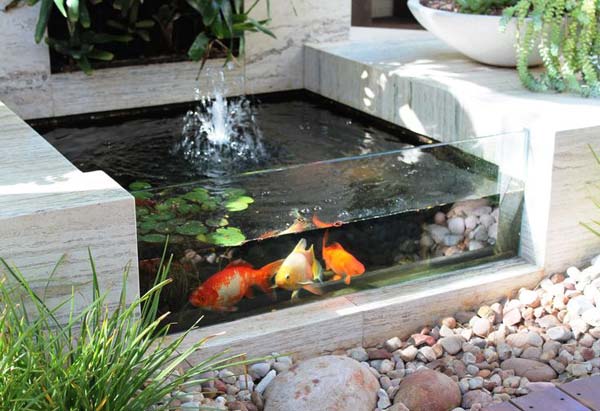
DIY Stock Tank Pond – A Mini Wetland Ecosystem:
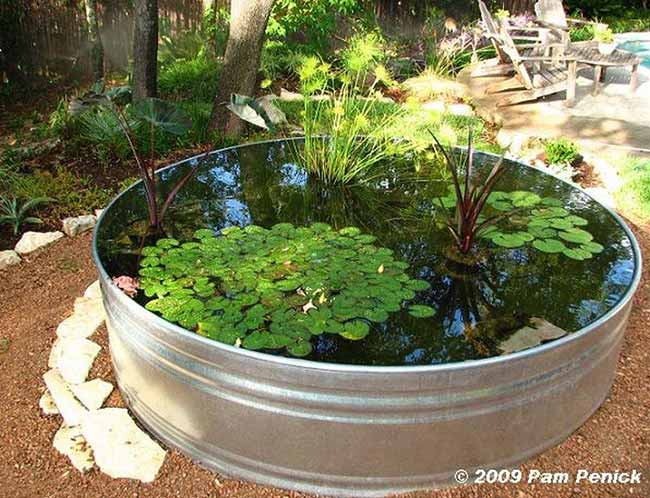
A stock tank pond is a cost-effective way to create a small aquatic ecosystem that supports water-loving plants, fish, and even frogs. It’s perfect for adding biodiversity to your backyard while requiring minimal setup.
Materials Needed:
- A stock tank (metal or plastic)
- Pond liner (optional, for better durability)
- Water pump and filter system
- Aquatic plants (water lilies, lotus, or duckweed)
- Small fish or snails for natural cleaning
- Gravel and stones for decoration
Step-by-Step Guide:
- Choose a Location: Pick a spot with partial sunlight, as too much direct sunlight can cause excessive algae growth.
- Prepare the Tank: If using a metal tank, consider adding a liner to protect against rust and leaks.
- Set Up Filtration: Install a small water pump and filter to keep the water clean.
- Add Substrate and Plants: Place gravel at the bottom and add aquatic plants to provide oxygen and shade.
- Introduce Fish and Other Life: Small fish like goldfish or minnows help maintain a balanced ecosystem.
- Regular Maintenance: Remove debris, check water levels, and clean the filter every few weeks.
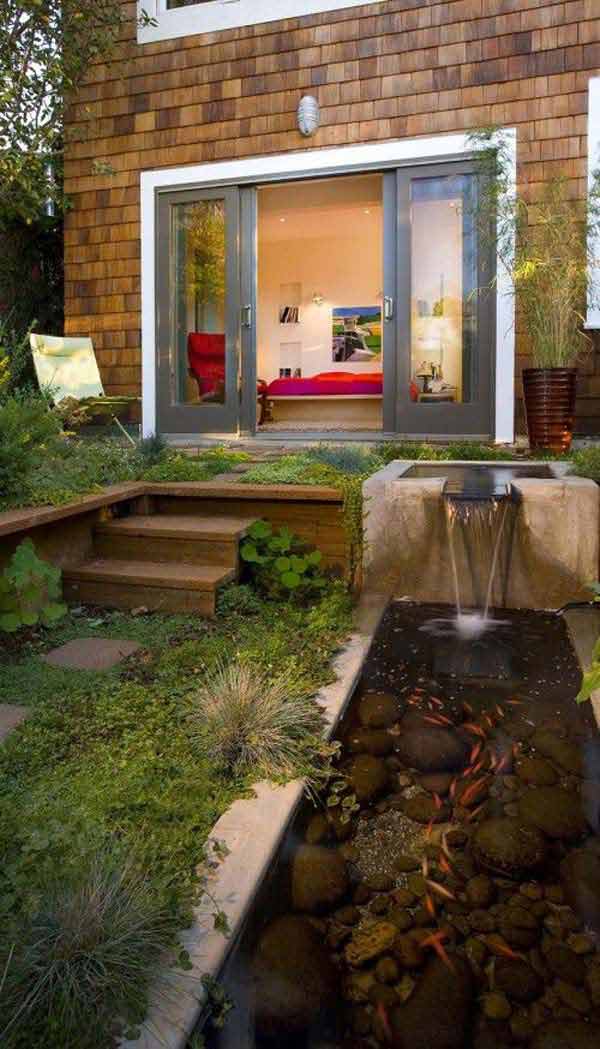
Source: houzz.com
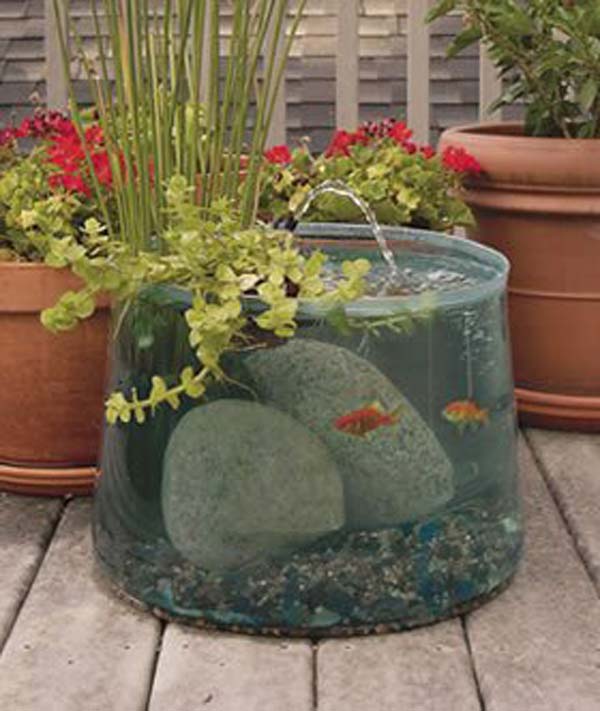
Garden & Deck-Top Pond – A Combination of Water and Greenery
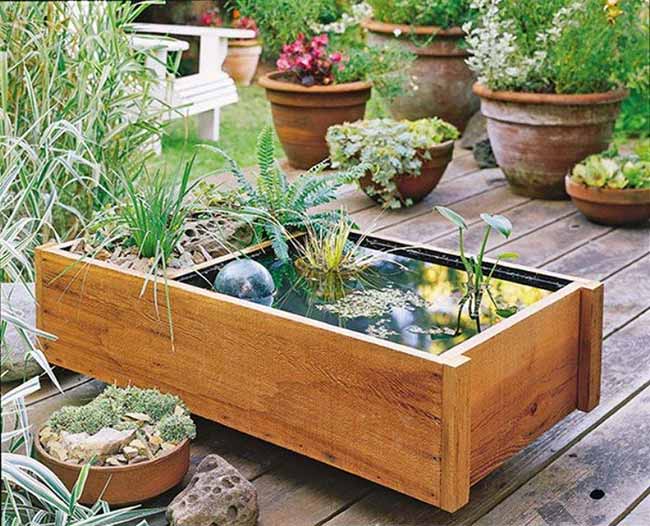
A deck-top pond is a stylish way to combine a small garden with an integrated water feature, making it ideal for patios or balconies.
Materials Needed:
- A large wooden or plastic container
- Pond liner to prevent leaks
- Small water pump for circulation
- Soil and plants for the garden section
- Decorative stones and aquatic plants
Step-by-Step Guide:
- Choose a Container: A deck box or large planter can be divided into two sections—one for the pond, one for plants.
- Install a Liner: Use a waterproof liner to create the pond section.
- Set Up Filtration: A small fountain pump adds movement and prevents stagnation.
- Plant the Garden: Add soil and drought-resistant plants like succulents or herbs.
- Decorate & Maintain: Add stones for aesthetics and check the water level regularly.
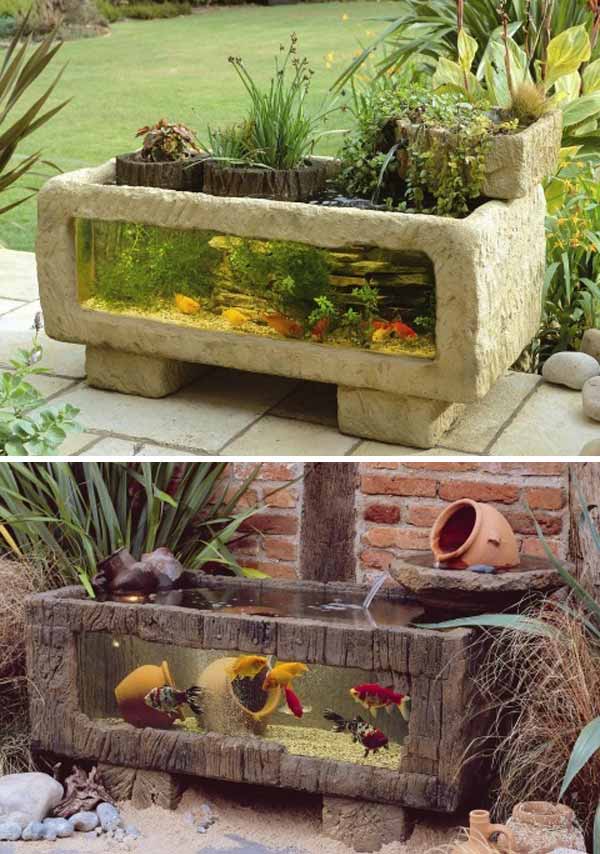
Trough Fish Pond – A Rustic Backyard Feature
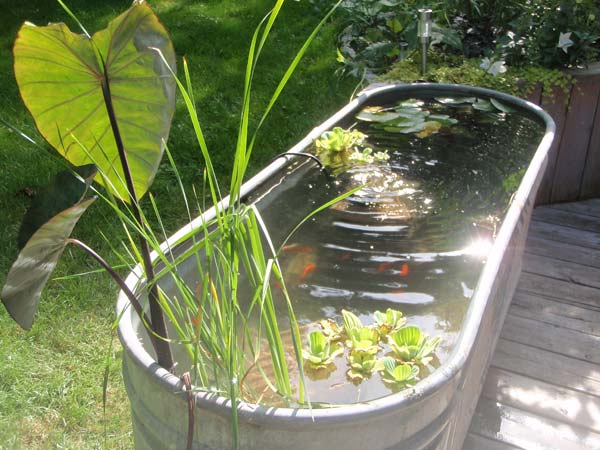
A trough fish pond is a simple way to introduce a water feature into your backyard. It mimics a natural pond and provides a habitat for fish and aquatic plants.
Materials Needed:
- A large metal or plastic animal trough
- Water pump and aeration system
- Pond liner (for longevity)
- Fish species like guppies, koi, or goldfish
- Water plants such as water lettuce or hyacinth
Step-by-Step Guide:
- Choose a Trough: Select a sturdy container that is deep enough for fish.
- Install Filtration: A small pump and filter keep the water clear and oxygenated.
- Add Water and Plants: Fill the trough and introduce floating plants to reduce algae growth.
- Introduce Fish: Wait a few days before adding fish to allow the ecosystem to stabilize.
- Monitor Water Quality: Regularly check for debris, algae, and ensure proper aeration.
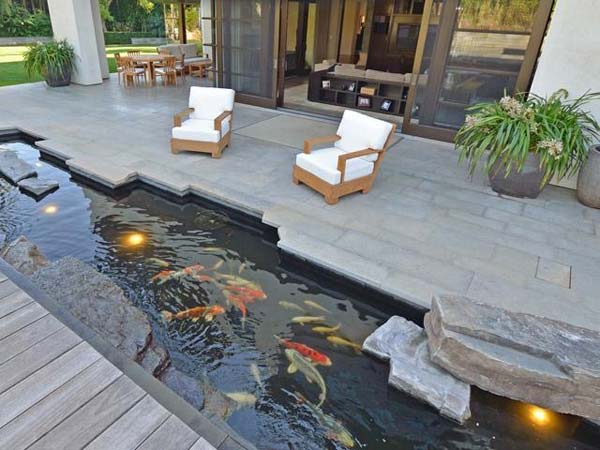
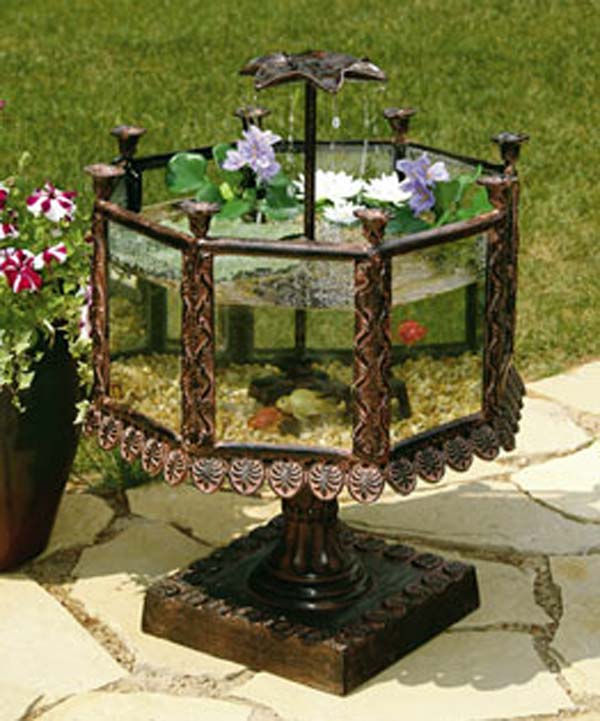
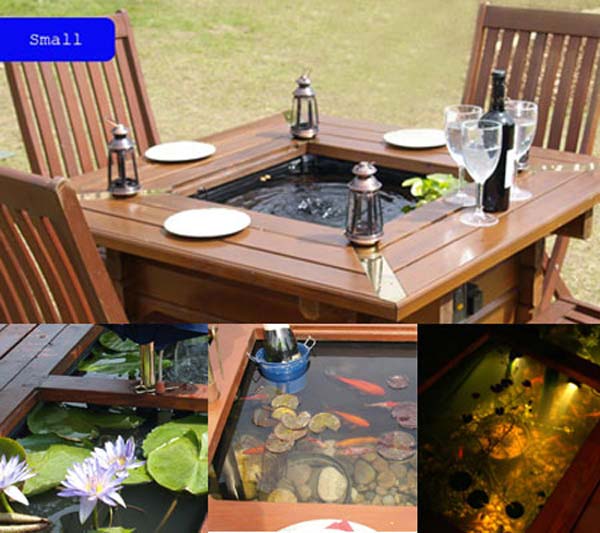
Source: elitechoice.org
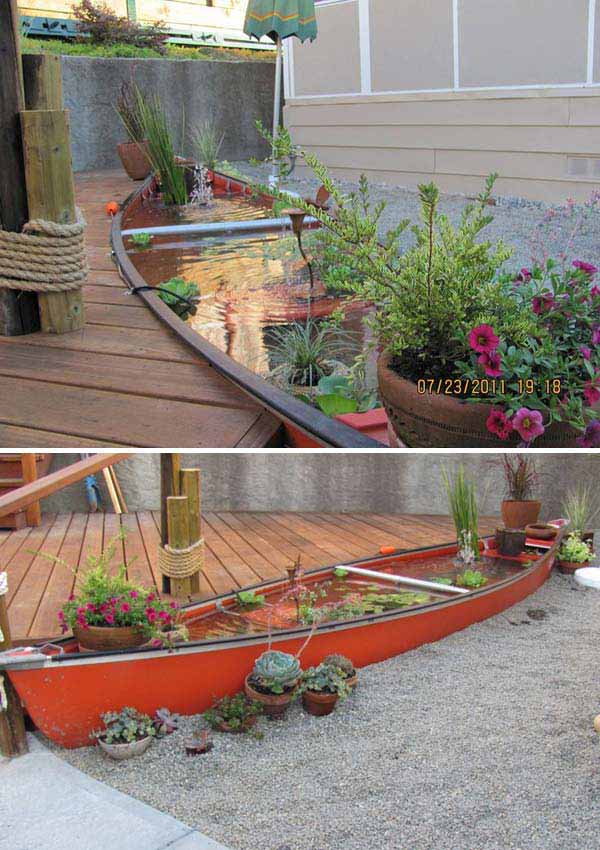
Source: hometalk.com
5 Creative Ideas for Outdoor Aquariums:
Transforming your outdoor space into a stunning aquatic oasis is easy with these creative and natural ideas for outdoor aquariums.
A trough tank, made of galvanized steel, is a perfect addition to any outdoor area, whether it’s a large garden or a small patio. Even a simple tub can be transformed into a lovely outdoor aquarium or pond, providing a peaceful and serene environment to relax and enjoy the beauty of nature.
You may also like: Smart Ways To Reuse and Repurpose Galvanized Tub & Buckets
For those with limited space, a large glass jar or terrarium can be the perfect base for a simple aquarium. These can be placed on tabletops or even in planters among flowers, creating a beautiful and tranquil display for your home or garden.
An old barrel can also be repurposed into a small outdoor aquarium. By sealing it properly, you can keep the water in and create a stunning display for your garden. You’ll love watching the fish and other aquatic life flourish in their new home.
For a more traditional pond, add a window constructed with sturdy acrylic to create one or two clear sides to your pond. This will give you a unique and breathtaking view of the underwater world that you can enjoy from the comfort of your own outdoor space.
You may also like: 21 Fascinating Low-Budget DIY Mini Ponds In a Pot
Lastly, get creative with your outdoor aquarium by using materials you already have on hand. Use a large plant pot, or even make an aquatic ecosystem out of an old canoe. The possibilities are endless, and you’ll be amazed at the beauty and tranquility you can create with these natural and sustainable ideas.
DIY Backyard Garden Pond (step-by-step):
Large Jar Aquarium – A Simple Indoor Aquatic Habitat:
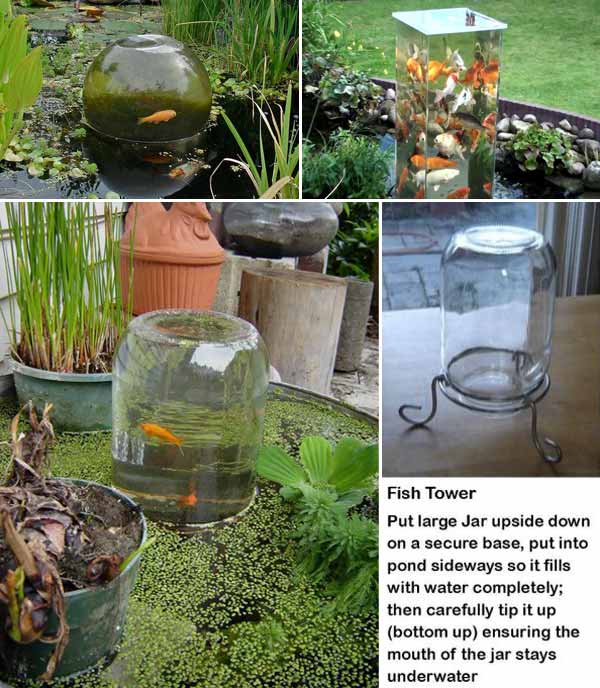
Large Jar Aquarium – A Simple Indoor Aquatic Habitat
A large glass jar aquarium is a beautiful and low-maintenance way to enjoy an aquatic ecosystem indoors. It can house small fish and shrimp while providing a natural aesthetic.
Materials Needed:
- A large glass jar or vase (at least 5 gallons)
- Aquarium gravel or sand
- Small filter (optional)
- Aquatic plants like anacharis or java moss
- A goldfish or a few shrimp
- Dechlorinated water
Step-by-Step Guide:
- Prepare the Jar: Clean the glass jar thoroughly and place it in a stable spot with indirect sunlight.
- Add Substrate: Spread a layer of gravel or sand at the bottom to anchor the plants.
- Introduce Plants: Choose low-light aquatic plants that will oxygenate the water naturally.
- Fill with Water: Slowly pour in dechlorinated water to avoid disturbing the substrate.
- Add Aquatic Life: Introduce a small goldfish or a few shrimp to help keep the environment clean.
- Maintenance Tips: Change about 20% of the water every two weeks and clean any algae buildup.
Bottom: Source: 1001gardens.org
Check Video Tutorial:
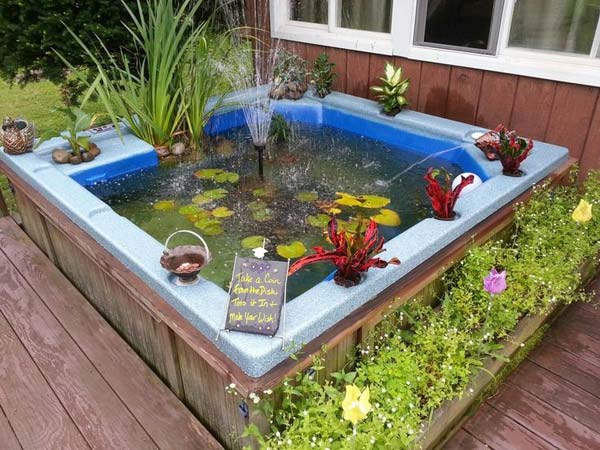
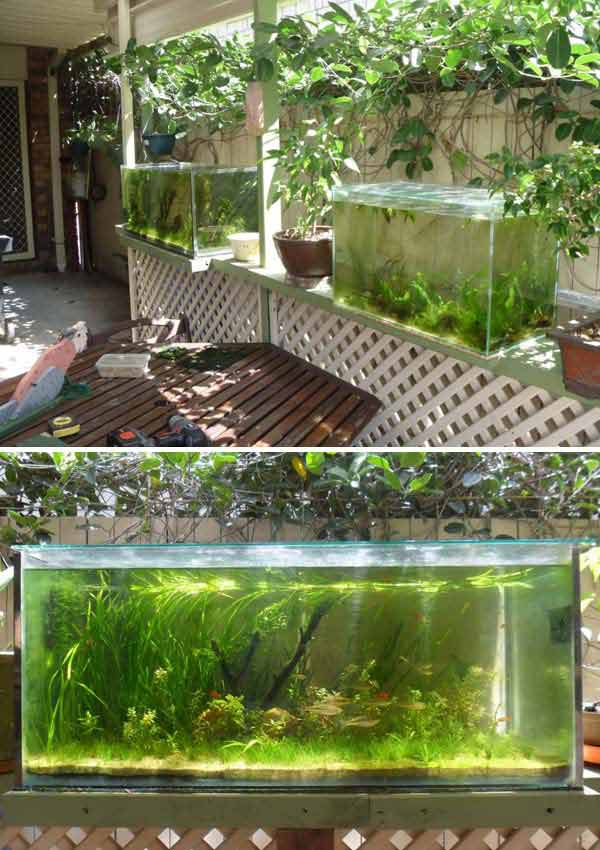
Best Fish for a Small Pond
Choosing fish for your pond depends on your local climate and how well the species can handle outdoor conditions. However, some hardy fish thrive in small ponds, even in cooler temperatures. These include:
- Variatus platies
- Wild-type endlers
- Cherry shrimp
- Ricefish
- White cloud mountain minnows
- Killifish
- Japanese trapdoor snails
- Koi and goldfish
- Apistogramma dwarf cichlids
- Rainbowfish
You can mix multiple species as long as they’re compatible and won’t prey on each other. Many fish will naturally reproduce in outdoor ponds, so plan ahead for the baby fish. Selling extra fish and plants to hobbyists, pet stores, or online can help offset the costs of maintaining your pond.
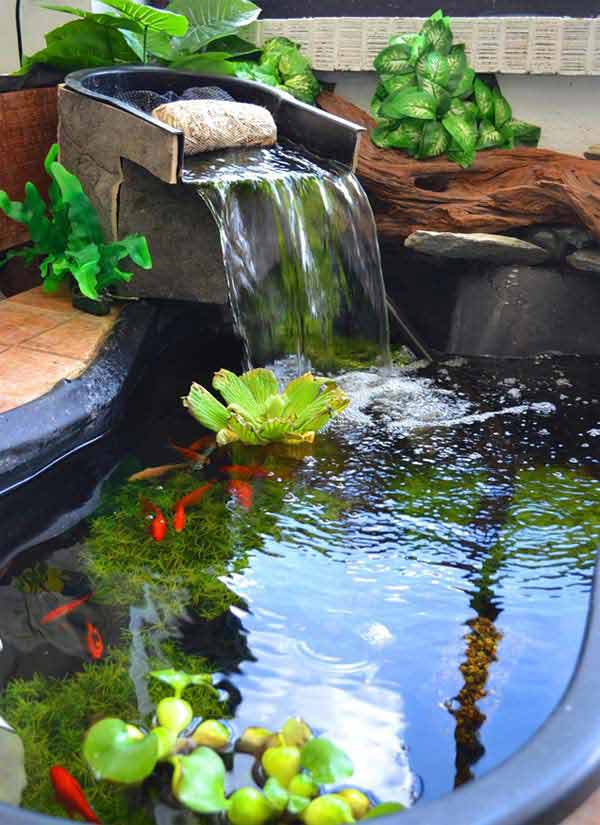
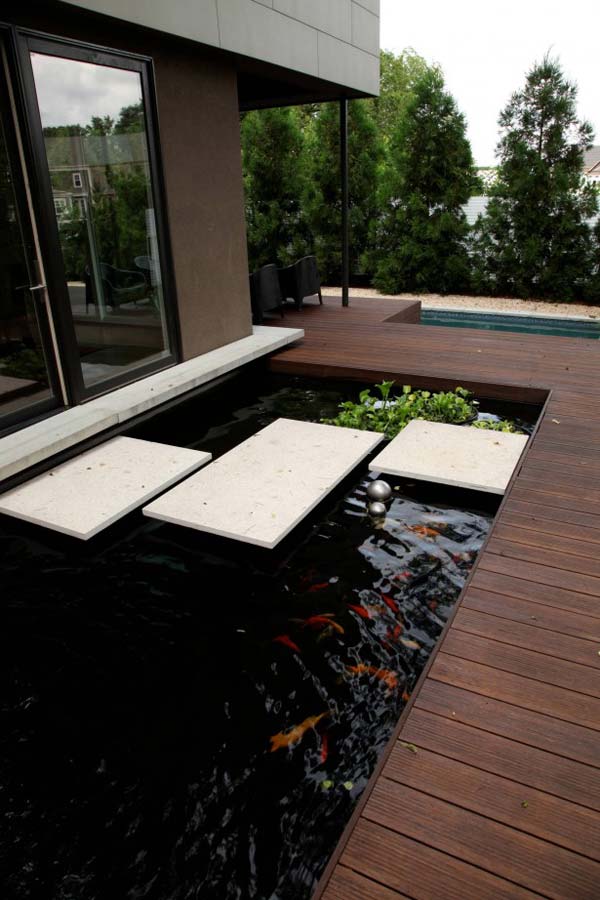
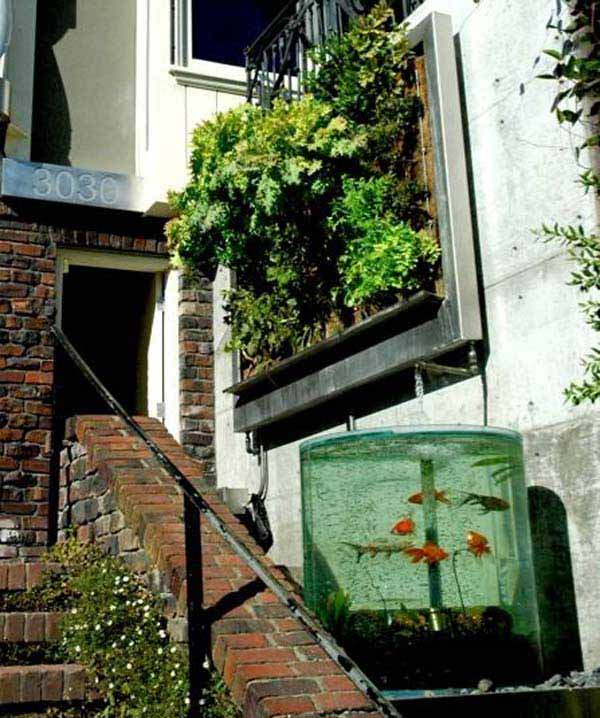
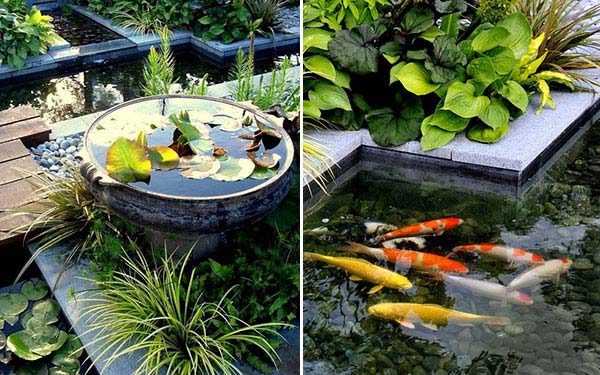
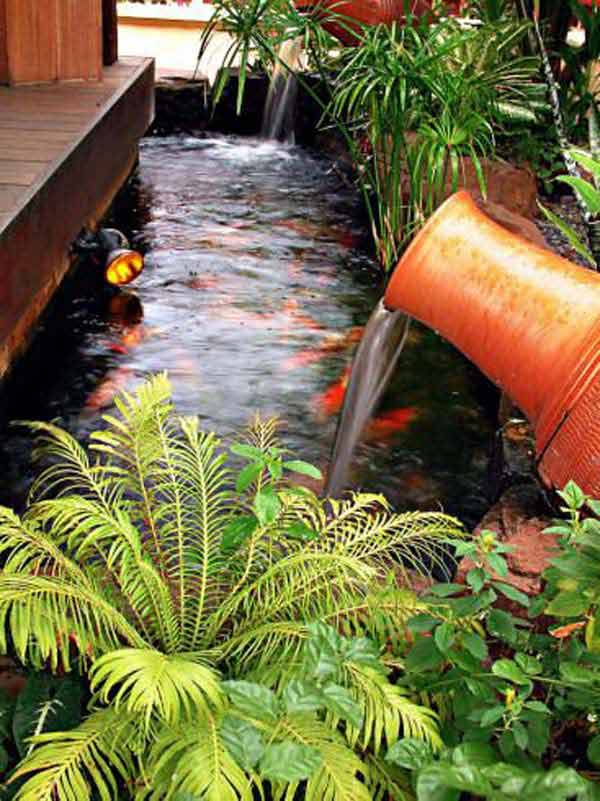
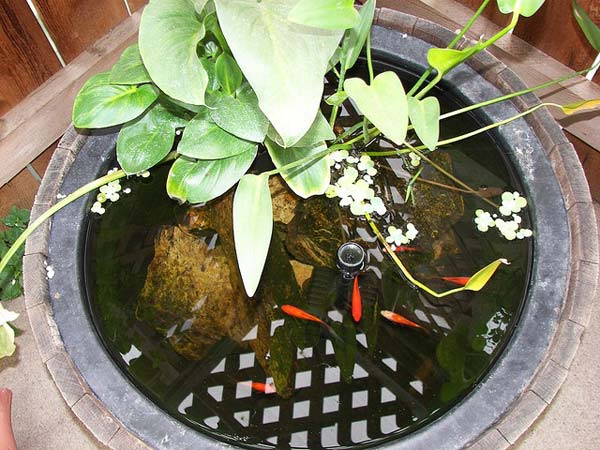
Source: flickr.com:catalina58601
Best Plants for a Small Pond
Adding aquatic plants to your pond is essential for maintaining a healthy ecosystem. These plants provide shade, protect fish from predators, and create resting spots for insects and amphibians.
One of the best choices is water hyacinth, known for its striking purple flowers and long roots that offer excellent shelter for young fish. It’s also highly effective at filtering toxins and organic waste from the water, which is why it’s commonly used in water treatment.
Other great pond plants include duckweed, water lettuce, water lilies, and lotuses, all of which contribute to water purification and habitat diversity.
Even some aquarium plants can thrive in ponds—stem plants like Pogostemon stellatus grow rapidly under natural sunlight. Thanks to these plants, decaying leaves and other organic debris won’t be a major concern, as they’ll naturally break down within the pond’s ecosystem.
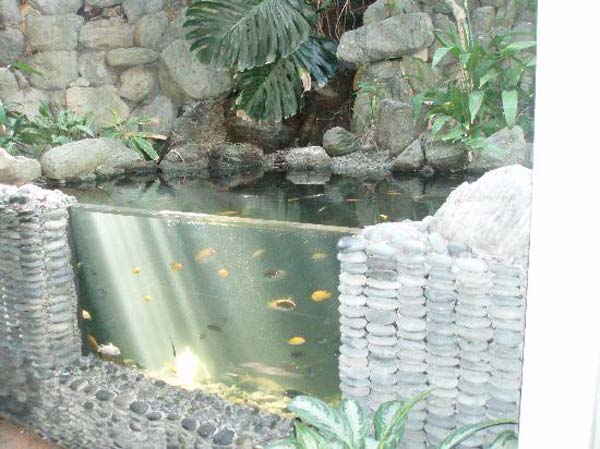
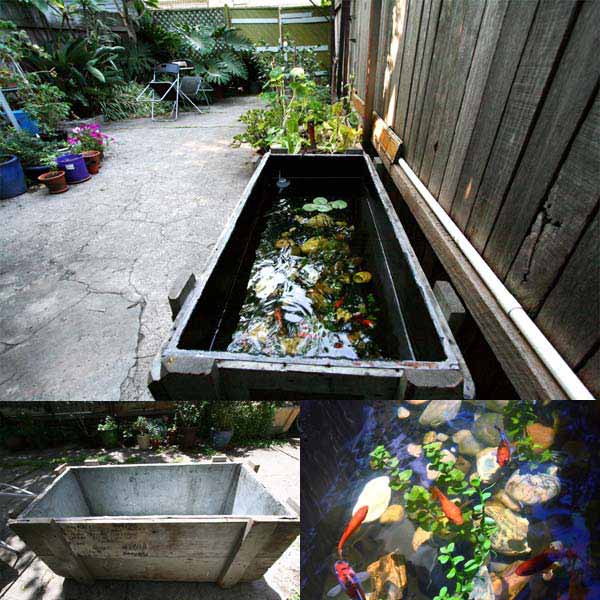
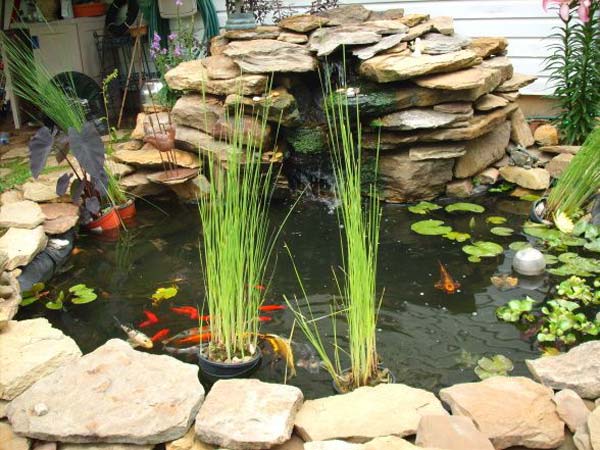
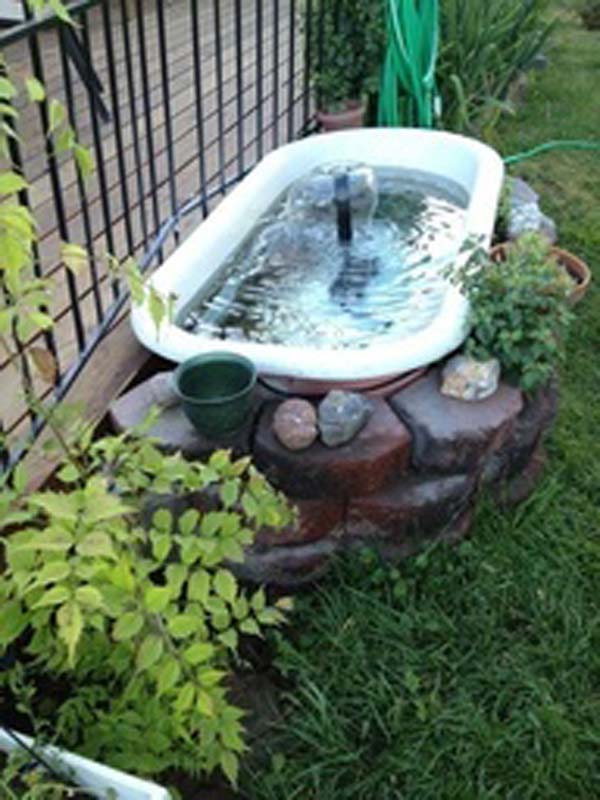
6 Tips for Putting a Fish Tank in Your Yard or Garden:
Location: Choose a location in your garden or yard that is protected from direct sunlight and extreme weather conditions. This will ensure that the water temperature and quality are stable, which is important for the health of your fish and plants.
Size: Consider the size of your fish tank carefully. Larger tanks generally provide more stable environments for fish and plants, but also require more maintenance. A smaller tank may be easier to manage, but you’ll need to be careful not to overcrowd your fish.
Materials: Choose materials that are safe for fish and plants. Avoid using any chemicals or materials that may be toxic to aquatic life. You can use natural materials like rocks, driftwood, or live plants to create a more natural environment for your fish.
Water Quality: Maintain the water quality in your fish tank by regularly testing the water and performing partial water changes. Use a good-quality water filter to keep the water clean and clear.
Fish Care: Choose fish species that are suitable for your tank size and environment. Learn about their specific care requirements, such as feeding and water temperature, to ensure they thrive in their new home.
Plant Care: If you have live plants in your fish tank, be sure to provide them with adequate light and nutrients. Prune them regularly to prevent overgrowth and maintain a healthy balance in your tank.
By following these simple tips, you can create a beautiful and natural fish tank in your garden or yard that provides a serene and relaxing environment for both you and your aquatic pets.

